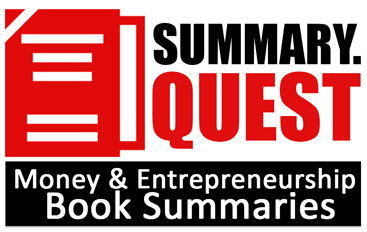Feeling trapped in a never-ending cycle of work and bills? It’s a common struggle, but there’s a way out. Grant Sabatier‘s book, “Financial Freedom: A Proven Path to All the Money You Will Ever Need,” challenges the conventional wisdom on money, work, and retirement, offering a refreshing alternative for those willing to think differently. Sabatier lays out a straightforward plan to boost your earnings while freeing up time for the things that bring you joy. So, if you’re tired of the same old routine, maybe it’s time to consider a fresh perspective. Here are some of the key ideas mentioned in the book:
Key Idea No. 1: Organize Your Money
To achieve financial freedom, you need to know your “number,” the amount of money you need to reach your goals. This number is different for everyone, depending on what financial freedom means to you. It could be paying off debt, saving to travel, or having enough to work less and spend more time with family.

Calculating your financial freedom number isn’t an exact science, but it helps you plan and execute a strategy. Factors like your lifestyle, location, family, investments, retirement plans, and inflation all play a role. Estimating your number lets you plan better and adjust your strategy over time.
Remember, your number may change, so it’s crucial to review it yearly. Your lifestyle directly affects how much money you need. The fancier your lifestyle, the longer you might need to work to hit your number.
To start, calculate your net worth, the difference between your assets (like savings, investments, property etc.) and liabilities (such as debts). Knowing your net worth gives you a clear picture of where you stand financially and can help you make informed decisions about your future finances.
Once you have a handle on your financial situation, it’s time to create a budget that works for you. This means being realistic about your expenses and identifying areas where you can cut back. Remember, a budget isn’t about restricting yourself, but rather about prioritizing your spending to align with your financial goals.
Remember, financial freedom is a journey. It takes time, patience, and discipline. Stay focused on your long-term goals and make steady progress.
Key Idea No. 2: Prioritize Time Over Money
Imagine if you could swap lives with a rich 90-year-old man for $100 million. Sounds good. Right? But the truth is, time is more valuable than money. As an adult, you only have around 25,000 days to live, and you probably need to work most of them to make ends meet. But what if you didn’t have to work for money? What if you had complete freedom to spend your time doing whatever you want?

It’s possible, but you need to rethink everything you know about retirement and money. The traditional approach of saving in a 401k retirement account for decades isn’t designed to help you retire quickly. Instead, you should speed up compounding by making and investing as much money as possible as early and frequently as you can.
Think of compounding as a snowball rolling downhill, gathering more snow as it goes. With compounding, your money earns interest, and that interest earns even more interest, causing your wealth to skyrocket over time. Even starting with a small investment, the growth potential is huge.

Let’s say you invest $100 in a stock, and it grows by 10 percent in the first year. You’ll have $110. If it grows by another 10 percent the next year, you’ll earn 10 percent not just on your initial $100 but also on the $10 you earned the previous year. This compounding effect means you’ll have $121 at the end of the second year.
If you keep $100 invested at 10 percent annual growth for forty years, without adding any more money, it will be worth $5,370. But if you add just $1 per month, you’ll have deposited a total of $480 over 40 years, which will be worth $11,694. That’s a huge difference!
By investing early, you give your money more time to grow. So, instead of trying to save every penny, think about how much your time is worth. Every minute you spend trying to save money is a minute you can’t use to do something else. So, consider investing in the stock market, and retire early so you can spend your time doing what you love.
Key Idea No. 3: Think Before You Buy
Spending money is so easy these days that most people don’t even think about the true cost of their purchases. But every transaction you make is a trade-off. By spending money on one thing, you have less money to save or spend on something else.

That’s why it’s essential to be mindful of your spending and take into account the true cost of everything you buy, or choose not to buy. Start by asking yourself some different questions, like “How happy will this purchase make me?” or “Can I get it for less?” By doing so, you can make smarter decisions about your money and fast-track your journey to financial freedom.
Similarly, calculating your real hourly rate is another crucial step to making better financial decisions. Sure, your pay stub may show that you make $20 per hour after taxes, but that’s only for the time you spend at work. When you factor in all the extra time you spend doing things related to your job but outside of it, like commuting, getting ready for work, or de-stressing after work, you’ll see that you actually make a lot less money than you think. Knowing your real hourly rate can help you evaluate new job and income opportunities and make better decisions about your finances.
So, remember, every purchase you make is a trade-off. By focusing on maximizing as many moneymaking strategies as possible and being mindful of your spending, you can fast-track your journey to financial freedom. Before making a purchase, ask yourself: is it really worth it?
Key Idea No. 4: Maximize Your Earnings for Financial Freedom
Your job can be the key to launching yourself into a more financially secure future. By focusing on increasing your market value, learning new skills, and maximizing your salary and benefits, you can optimize your full-time job and significantly reduce the time it takes to achieve your financial goals. Even if you dream of starting your own business, keeping your day job until you’re financially stable enough to pursue your dream is wise. Balancing your short-term and long-term strategies is key. Here are three short-term strategies to help you maximize your benefits, increase your salary, and give yourself more flexibility with your time.
Firstly, it’s crucial to understand and take full advantage of the benefits offered by your employer. Many employees overlook valuable perks such as health insurance, retirement plans, and remote work options. By leveraging these benefits, you can significantly enhance your overall compensation package and financial security.
Furthermore, don’t shy away from negotiating for better benefits and salary. Whether it’s requesting additional vacation days, flexible work hours, or a higher pay grade, advocating for yourself is key. Remember, employers are often open to negotiation, and by confidently expressing your worth, you can potentially secure more favorable terms.
Finally, giving yourself more flexibility with your time can improve your quality of life and make you more productive. Look for opportunities to work remotely or create your own schedule, which can give you more control over your time and increase your productivity.

Additionally, consider exploring additional income streams through a side hustle. Side hustling can be very profitable, but you need to be strategic about it. You need to move beyond simply trading your hours for a limited amount of money and transition to thinking about side hustling using the enterprise mind set. The enterprise mind set requires looking for as many opportunities to make money as possible and investing all the money you make. Every side-hustle dollar you invest reduces the amount of time it will take to hit your financial goals.
One of the great things about side hustling is that you can go at your own pace, but be sure to calibrate your expectations based on how much time you can realistically spend. Your side hustle may require a lot of time to start, but then less time to maintain. Just because you’re working every Saturday to get your side hustle off the ground doesn’t mean you will need to work every Saturday forever.
Starting a side hustle can be overwhelming, but don’t over think it. Just get started and figure it out as you go. Remember, you aren’t stuck with any idea; you can always move on to another one, if it doesn’t work. The most important thing is to have fun while you’re at it!
Key Idea No. 5: Plan Your Early Retirement
Planning for early retirement is a goal many of us aspire to achieve. It’s a time when we can finally enjoy the fruits of our labor and pursue our passions without the constraints of a traditional 9-to-5 job. So, when thinking about retiring early, it’s super important to plan how you’ll use your money. This helps you avoid penalties and extra taxes. As you get closer to early retirement, you’ll know more about how much you spend each month and how to spend smart to stay happy.
First off, figure out how much cash you need. Decide if you can use money from things like renting out property or side jobs before touching your investments. Using this extra money first means you won’t have to dip into your investment savings right away.
Planning your exit from work needs three main things: planning your cash flow strategy, ensuring you can live off your investments for the rest of your life, and figuring out what you’re going to do next. Your goal is for your savings to last your whole life. Although it’s not an exact science, there are principles and strategies you can use to significantly increase the odds of success.

Remember to recalculate your number every once in a while, to keep you on track. As you approach early retirement, research new early retirement withdrawal strategies because tax laws change and new loopholes are discovered.

As you approach early retirement, it’s crucial to take a close look at your monthly expenses and identify areas where you can trim unnecessary spending. Adjusting spending habits to align with retirement goals, whether through downsizing, cutting back on non-essential expenses, or finding creative ways to save, can help ensure financial sustainability in retirement.
In conclusion, achieving financial freedom involves more than just saving money; it requires optimizing earnings, managing spending, and making wise investments. The actionable advice in the book provides a roadmap for anyone looking to take control of their finances and build a more secure future.

Leave a Reply